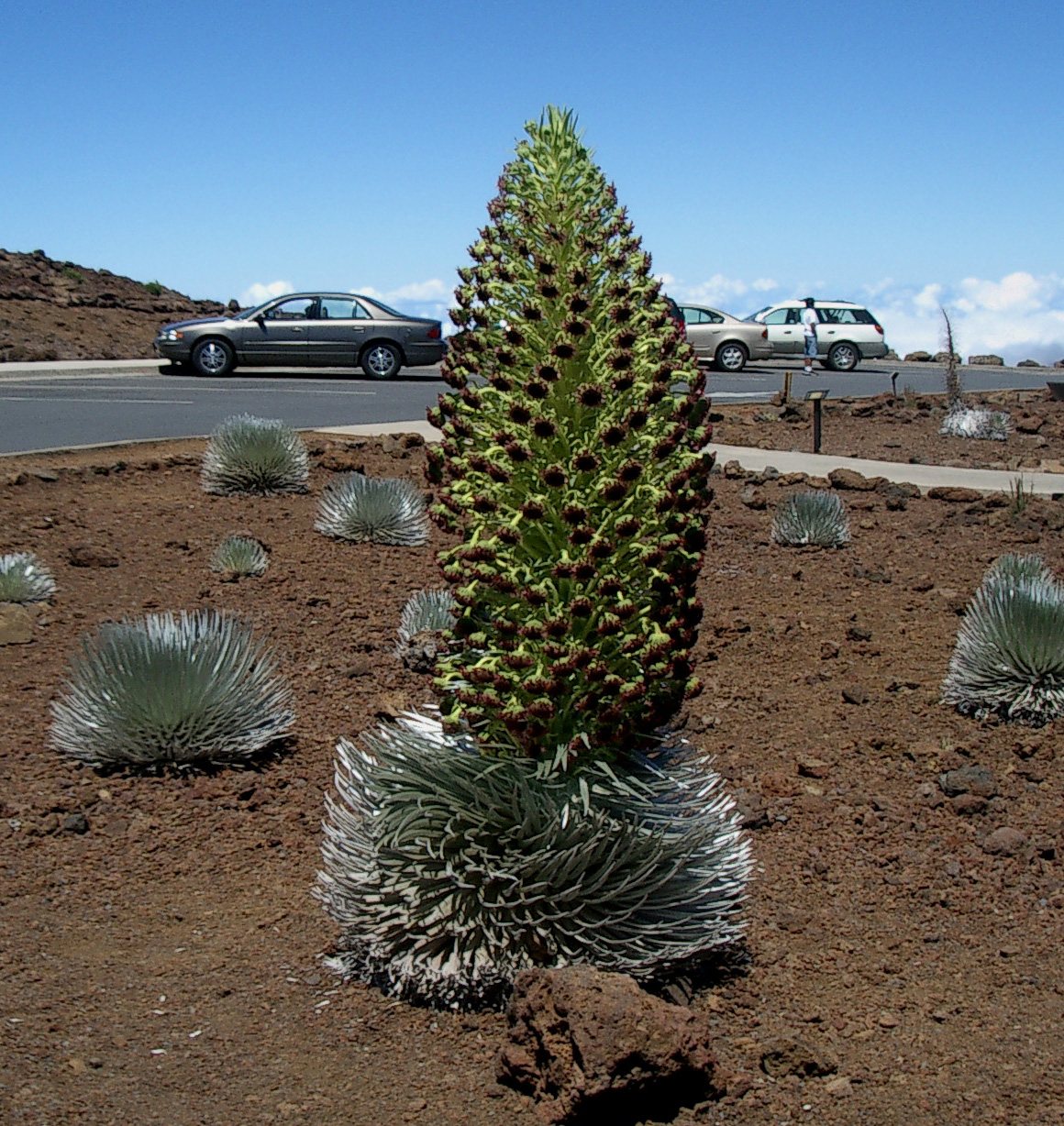Populating Hawaii with Plants and Animals
Contact
University of Arkansas System Division of Agriculture
Cooperative Extension Service
2301 S. University Ave.
Little Rock, AR 72204

Populating Hawaii with Plants and Animals
Hawaii is a tropical paradise in the middle of the Pacific Ocean. And as land masses go, the islands have only been around a few million years, so populating the volcanic islands with plants and animals takes some doing. The lush tropical landscape we see today is very different than what the first Polynesian explorers encountered 1,200 years ago when they first made landfall on her beaches.
Volcanic rocks are rich in all the minerals needed to make plants grow, but they are rocks. This conversion from rock to soil takes time. On the big island of Hawaii exist the two tallest volcanos in the Hawaiian chain, Mauna Kea and Mauna Loa. Mauna Kea, at 13,800 feet, is the dormant volcano on the north end of the island with an estimated age of about one million years. Mauna Loa, at 13,100 feet, is the world’s largest active volcano and it still producing lava flows along the rift zone of its southern flank. North of the valley separating these two massive volcanos, soil has had time to form. In lower elevations you can dig into the rich soil without hitting the black volcanic rock; south of the valley soil is forming between the rocks but it has a way to go before it becomes easy to farm.
Plants and animals must be transported great distances – almost 2,500 miles from North America or similar distances if coming from other directions. Windborne seeds and spores were probably the first to arrive, growing between the cinders in the nutrient-rich soils as they formed. Some floated in on ocean-going debris or via seeds designed for long ocean voyages. Undoubtedly some seeds arrived via migratory birds who unwittingly transported seeds on their feet or in their feathers. Every Arkansas farmer has seen this happen when bass or sunfish show up in a pond that was never stocked with fish. Nature abhors a vacuum and will always strive to fill it.
It must also be remembered that the islands as they exist today are part of an over 1,200-mile-long chain of underwater volcanos that have now eroded beneath the sea. Undoubtedly plants and animals leapfrogged from island to island as new islands arose from the sea and as the Pacific plate slid northwest over the volcanic hotspot.
As plants will, they settled into spots up and down the side of the volcanos that fit their particular needs. Before human settlement of the islands, it is estimated there were about 1,400 species of native plants with about 90 percent of these found nowhere else on the planet. Once a plant (or animal) species arrived on the islands they began the slow process of evolving to fill those vacant spaces found on the side of the volcano. Not surprisingly, some favored the moist, trade winds side (the northeast) while others eked out an existence on the dry, leeward side of the volcanos in desert-like conditions.
Silversword is one of the native Hawaiian plants I find especially interesting. It grows at the tops of the volcanos on Maui and the Big Island in a barren moonscape landscape of broken volcanic cinders above 8,000 feet. Silversword has softly pubescent, silver-colored, sword-shaped leaves that grow in a tight rosette and curve inward forming a structure the size of a large beachball. The plant belongs to the sunflower family and is believed to be a distant relative of a California native called tarweed. According to DNA estimates (based on genetic mutation rates), the plant has been on the Big Island between five and six million years. The astute reader will recognize this is a problem as Mauna Kea is thought to be only a million years old.
The plant is a wonderful example of nature’s design to optimize form and function. The silvery pubescence provides insulation for the freezing temperatures that can occur at any time throughout the year and it reflects the heat of the bright sun during daytime hours. Early in the day, the curved leaves focus the rays of the rising sun on the center core of the plant, warming that part as much as 40 degrees above ambient conditions. The silvery hairs also capture moisture from passing clouds and transport it to the roots via tiny rivulets along the surface of the leaf. Between the cells of the plant body and root an intracellular gel is produced which doesn’t freeze when it gets cold but provides slow-release water for the plant during the long periods of drought.
Flowering occurs in July and August when a massive, six-foot-tall inflorescence bursts from the center of the plant and produces hundreds of flower heads that contain thousands of seeds. The ball of silvery foliage will be between 20 and 90 years old when it flowers. After releasing its seed, the original plant dies. New plants germinate on the rocky slopes visited by moist wintertime fogs.
By default, isolated places such as Hawaii become laboratories for nature to try new approaches to survival. But, all things considered, survival in paradise isn’t all that difficult so next time we will consider plants introduced by the flood of humans who have migrated to this special place over the centuries.
